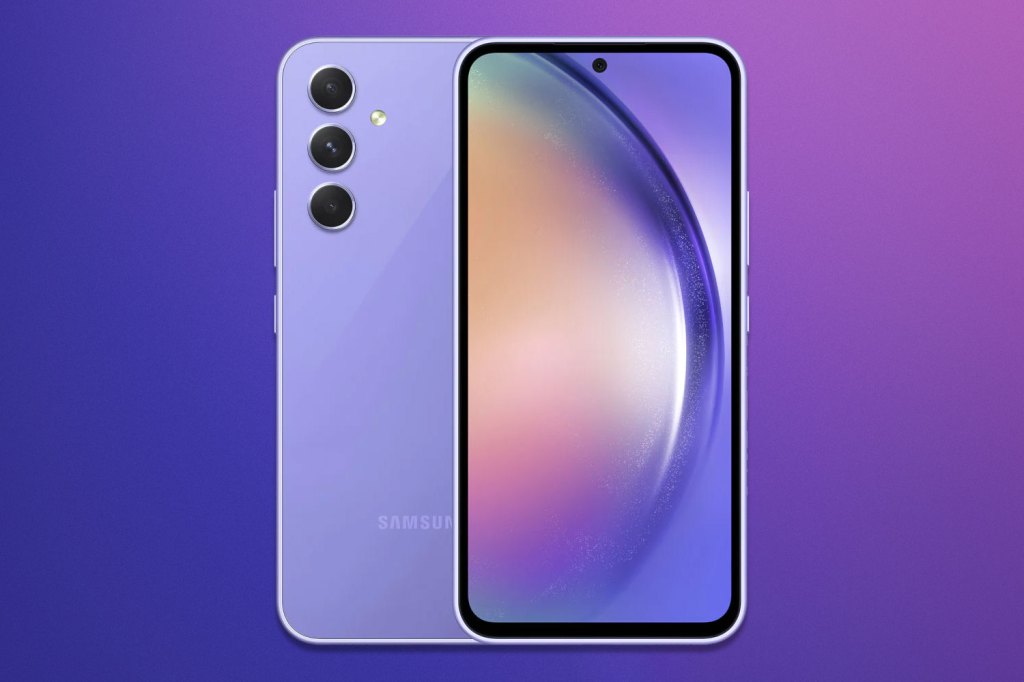
Don’t feel like dropping a fat stack of notes on a fancy flagship phone? Good news: you don’t have to. With solid specs, good design and plenty of features, the best cheap phones offer outstanding value for money. Sure, you might have to accept a couple of compromises with a cheap smartphone – think plastic shells and sub-par secondary cameras. But smartphone quality has improved so much that the best cheap phones today also benefit from brilliant screens, strong battery life and performance to put fear into the flagships.
Not sure how to choose the best blower for your budget? From familiar makes to lesser-known names, the list below features our pick of the top affordable handsets – all for less than $450/£450. So whether you’re shopping for a bona fide mobile bargain or looking for a backup blower that won’t break the bank, you’ll find your ideal budget phone in our buying guide.
If you’re looking for something a little more expensive, then you can check out Stuff’s guide to the best mid-range phones, which are priced between $450/£450 to $650/£650, and best smartphones, with no price limit.
What is the best cheap phone?
The Samsung Galaxy A54 5G (buy now) is the best cheap phone you can buy. It has a sharp, punchy screen and a very capable multi-lens camera system. Inside is the Exynos 1380 CPU and 8/12GB of RAM which make for a far smoother experience than the previous generation A series phones.
Other cheap phone recommendations
The best cheap phones you can buy today:
1. Samsung Galaxy A54 5G
| Samsung Galaxy A54 5G specs | |
|---|---|
| Screen | 6.4in, 2400×1080 AMOLED w/ 120Hz |
| Processor | Samsung Exynos 1380 |
| Memory | 6/8GB |
| Storage | 128/256GB, plus microSD |
| Cameras | 50MP, f/1.8 w/ OIS + 12MP, f/2.2 ultrawide + 5MP, f/2.4 macro rear 32MP front |
| Operating system | Android 13 w/ OneUI |
| Battery | 5000mAh w/ 25W wired charging |
| Dimensions | 158x77x8.2mm, 202g |
Want the Samsung prestige without the high-end price tag? Then the A54 5G is a contender worthy of your shortlist. With a price tag well below the lofty heights of the Galaxy S23 range, this is a mid-range handset which sacrifices some flagship style and power, while still providing a solid smartphone experience.
One of its standout features during our review was its sharp, punchy screen, along with its capable multi-lens camera system, with a decent selfie camera to boot. And unlike its A53 predecessor (which massively disappointed on the power front), we’re pleased to report that the A54’s Exynos 1380 CPU and 8/12GB of RAM make for a far smoother experience.
Throw in reasonably fast (though far from groundbreaking) 25W charging, and you’ve got yourself a more affordable Samsung handset that provides the highly coveted Samsung-esque experience, at a far more palatable price.
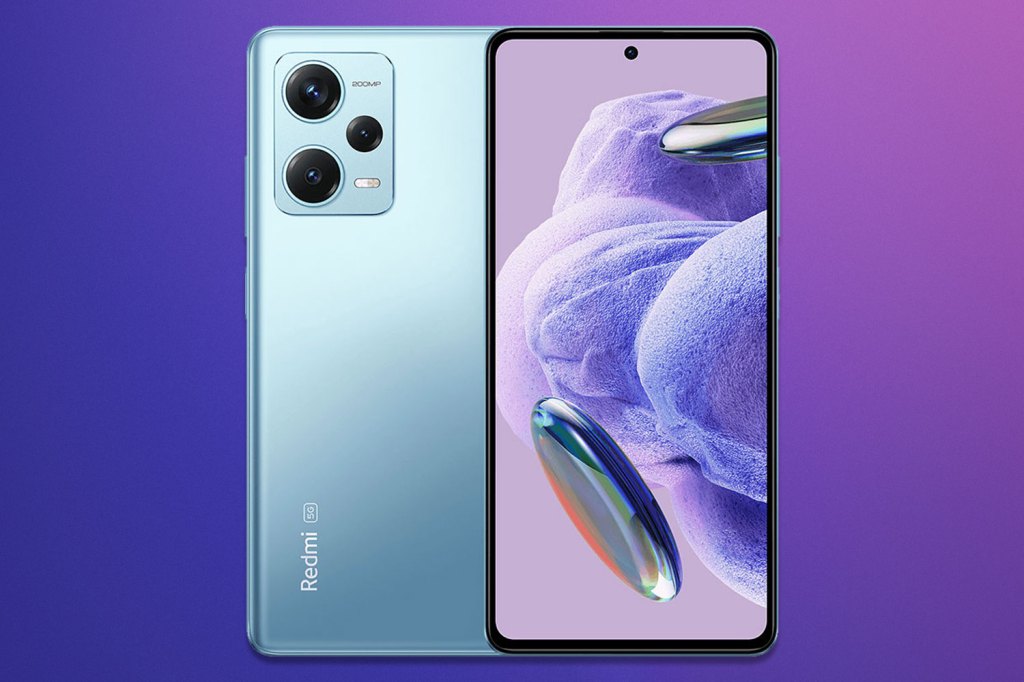
2. Redmi Note 12 Pro+
| Redmi Note 12 Pro+ specs | |
|---|---|
| Screen | 6.67in 2400×1080 OLED w/ 120Hz, Dolby Vision |
| Processor | Mediatek Dimensity 1080 octa-core |
| Memory | 8/12GB |
| Storage | 256GB |
| Cameras | 200MP, f/1.7 w/ PDAF, OIS + 8MP, f/2.2 ultrawide+ 2MP, f/2.4 macro rear 16MP, f/2.5 front |
| Operating system | Android 12 w/ MIUI 14 |
| Battery | 5000mAh w/ 120W wired charging |
| Dimensions | 163x76x8.9mm, 208g |
In typical Redmi fashion, the Note 12 Pro+ is positively bursting with impressive hardware that you’d be hard-pressed to find in similarly-priced handsets. In this instance, we’ve got a pixel-packed 200MP main camera, which produced detailed shots in bright lighting conditions, during our in-depth review.
Another impressive feature that wipes the floor even with truly high-end flagships like the Apple iPhone 14 and Samsung Galaxy S23, is its charging speed. Namely, a full 120W charging capability that can produce a full charge in under 25 minutes. Impressive stuff.
With a more than adequate all-day battery life and sharp screen included too, there’s very little not to love about Redmi’s effort here, especially at this price. One of the best cheap smartphones you can currently buy, you won’t be disappointed if this is your top pick.
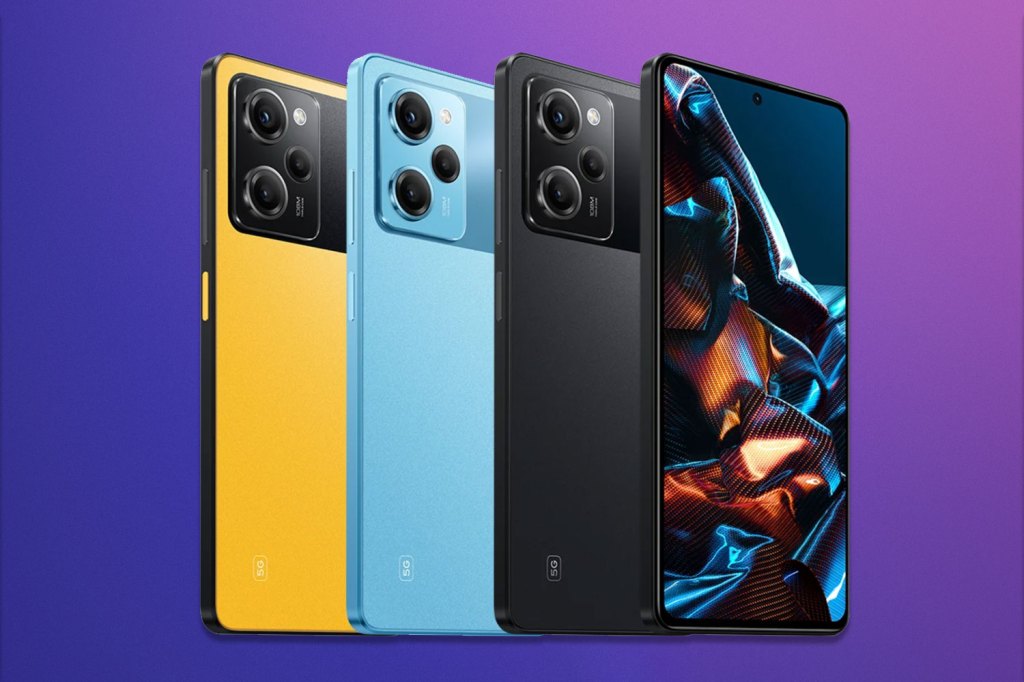
3. Poco X5 Pro 5G
| Poco X5 Pro 5G specs | |
|---|---|
| Screen | 6.67in, 2400×1080 OLED w/ 120Hz |
| Processor | Qualcomm Snapdragon 778G octa-core |
| Memory | 8/12GB RAM |
| Storage | 128/256GB |
| Cameras | Camera 108MP, f/1.9 main w/ PDAF, 8MP, f/2.2 ultrawide, 2MP f/2.4 macro. 16MP, f/2.5 front |
| Operating system | Android 12 w/ MIUI 14 |
| Battery | 5000mAh w/ 67W wired charging |
| Dimensions | 163mmx76x 7.9mm, 181g |
We’re not sure how you’ll feel about the rear plastic panel on the Poco X5 Pro 5G. A diffuse plastic affair that does well with repelling fingerprints, its style and texture weren’t exactly to our reviewer’s taste — but design is subjective.
That aside, it offers plenty of bang for your buck, with an exceptional OLED display, complete with a slick 120Hz refresh rate. While a few of its cameras aren’t really worthing shouting about, the main snapper can proudly stand on its own, with plenty and depth and detail on offer. And while we found the default processing to be a little on the over-saturated side, you can opt for more realistic results in the 108MP mode.
There’s plenty of power for gaming too, thanks to a respectable Snapdragon 778G processor and up to 8GB of RAM, with zippy 67W fast charging included for good measure. If you can get past the design (you may even love it), then this is a very capable handset that should see you in good stead for at least a few years, if not more.
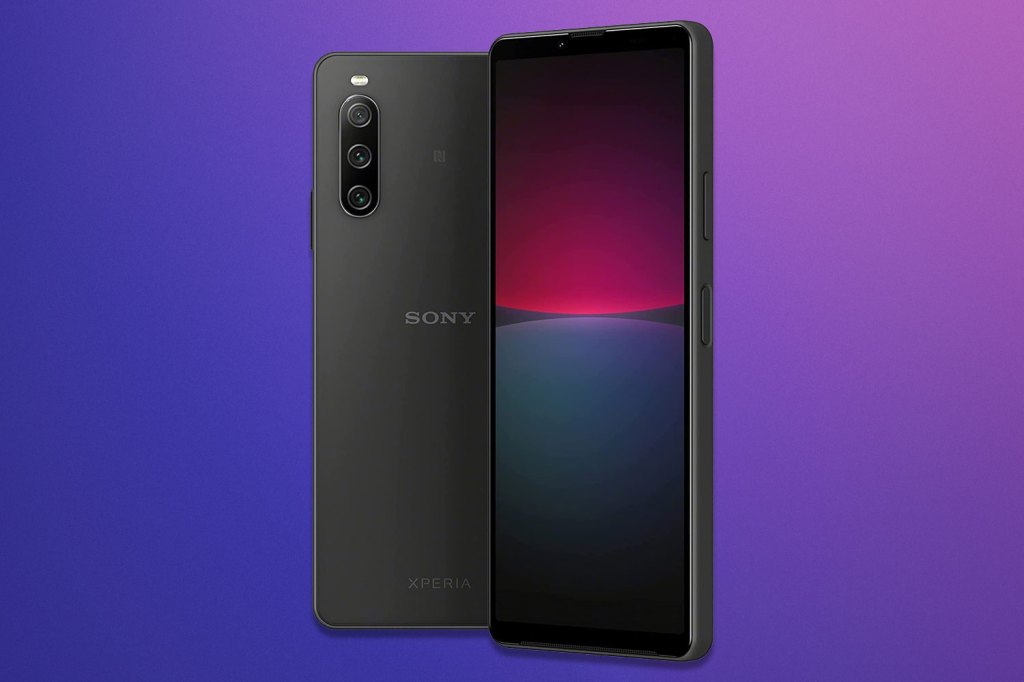
4. Sony Xperia 10 IV
| Sony Xperia 10 IV specs | |
|---|---|
| Screen | 6in, 2520×1080 OLED |
| Processor | Qualcomm Snapdragon 695 octa-core |
| Memory | 6GB RAM |
| Storage | 128GB on-board, microSD expansion |
| Cameras | 12MP, f/1.8 w/ PDAF, OIS + 8MP, f/2.2 telephoto w/ PDAF, 2x optical zoom + 8MP, f/2.2 ultrawide rear. 8MP, f/2.0 front |
| Operating system | Android 12 |
| Battery | 5000mAh |
| Dimensions | 153x67x8.3mm, 161g |
Can you get cheaper, better-specced handsets than the Xperia 10 IV from the likes of Realme, Poco, Xioami and more? Yes. From screens with higher refresh rates, to faster charging and individual cameras that might perform better overall, there are no shortage of tempting alternatives worth picking up over Sony’s offering.
As with most Sony handsets though, the Xperia 10 IV fills a niche. If you’re a fan of Sony’s unique fuss-free design, more compact screen, and want amazing battery life, the Xperia 10 IV could be the phone for you. Its main camera and zoom capabilities will serve you well, though if night photography and wide-angle shots are more your bag, you’ll want to look elsewhere.
If you’re still drawn to its design and positive features after reading our review though, then chances are you won’t be disappointed.

5. Nothing Phone (1)
| Nothing Phone 1 specs | |
| Screen | 6.55in, 2400×1080 flexible OLED w/ 120Hz refresh rate, HDR10+ |
| CPU | Qualcomm Snapdragon 778G+ octa-core |
| Memory | 8GB/12GB RAM |
| Cameras | 50MP, f/1.9 main w/ phase-detect autofocus, OIS, EIS + 50MP, f/2.2 ultrawide w/ EIS. 16MP, f/2.5 front |
| Storage | 128GB/256GB on-board |
| Operating System | Android 12 w/ NothingOS |
| Battery | 4500mAh non-removable w/ 33W wired, 15W wireless charging, 5W reverse charging |
| Dimensions | 159x76x8.3mm, 194g |
Nothing’s first smartphone is about as distinctive as they come, with head-turning glyph lighting and a semi-transparent rear panel. Now that Phone (2) takes care of the mid-range, Nothing has tamed Phone 1’s price just a little to earn it a recommendation in our budget round-up.
You’re getting a capable phone for your cash, with a Snapdragon 778G+ CPU able to play most games fairly smoothly – albeit not always at the OLED display’s 120Hz refresh rate. There’s a good amount of memory to help smooth out multitasking, and storage is plentiful too. Wireless and reverse wireless charging are unusual in budget models, while the 4500mAh battery does a decent enough job at getting through the day.
We were quite impressed by the dual 50MP rear cameras, which have very competent image processing given this is Nothing’s first stab at any sort of phone. Updates to the latest version of Android have also brought a much-improved NothingOS interface, with an extensive selection of widgets and colour-matched icons. It’s one of our favourite versions of Android right now, and Nothing has plans to improve it further in 2024.
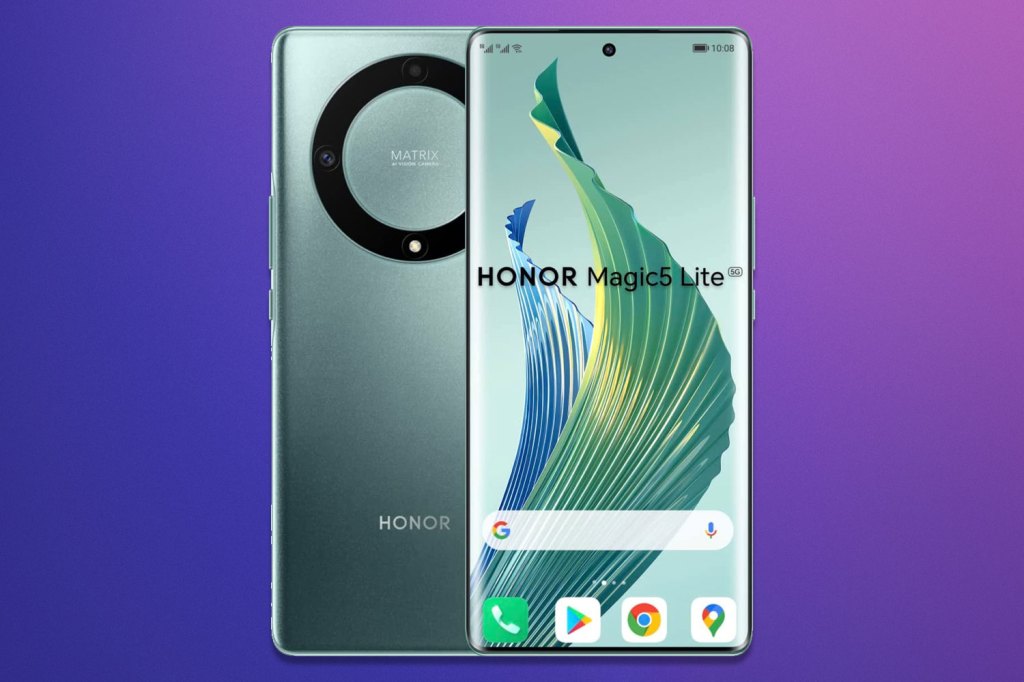
6. Honor Magic 5 Lite
| Honor Magic 5 Lite specs | |
|---|---|
| Screen | 6.67in, 2400×1080 OLED w/ 120Hz |
| Processor | Qualcomm Snapdragon 695 octa-core |
| Memory | 6GB RAM |
| Storage | 128GB |
| Cameras | 64MP w/ PDAF + 5MP ultrawide + 2MP macro rear 16MP front |
| Operating system | Android 12 w/ MagicUI 6.1 |
| Battery | 5100mAh w/ 40W wired charging |
| Dimensions | 62x74x7.9mm, 175g |
If good looks and a gorgeous screen are high on your priority list, the Honor Magic 5 Lite is a very safe bet. With a slick design that shames many pricier phones, a beefy battery, and a decent (though not spectacular) main camera, it provides a lot of phone for your cash.
The secondary cameras don’t add much value, mind, and there’s not enough performance here to satiate the demands of hardcore mobile gamers. But if you spend more time in Chrome than Call of Duty, and want to go as long as possible between reaching for the charger, then this could very well be the most well-rounded handset for you.
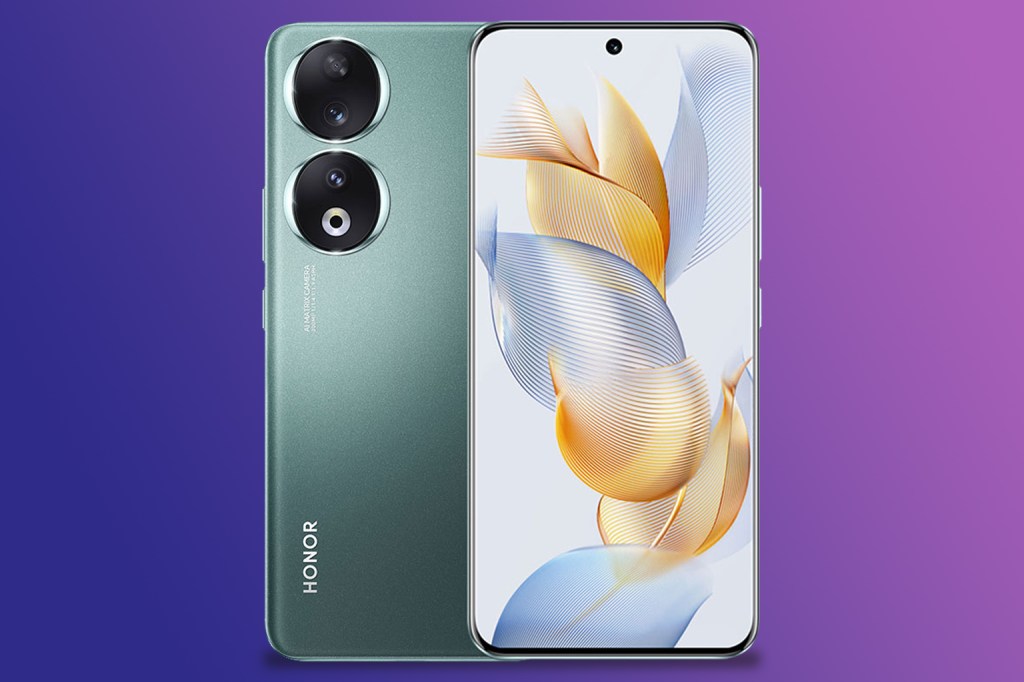
7. Honor 90 Lite
| Honor 90 Lite specs | |
| Screen | 6.7in, 2388×1080 LCD w/ 90Hz |
| CPU | MediaTek Dimensity 6020 |
| Memory | 8GB |
| Cameras | 100MP, f/1.9 + 5MP ultrawide + 2MP depth + 2MP macro 16MP, f/2.4 front |
| Storage | 256GB (no SD card) |
| Operating system | Android 13 |
| Battery | 4500mAh w/ 35W wired |
| Dimensions | 162.9 x 74.5 x 7.48mm |
| Weight | 179g |
The Honor 90 Lite is absolutely worth your attention if you’re after a detailed camera or ample storage for very little cash. It’s one of few budget-focused models that comes outfitted with 256GB of on-board storage, rather than 128GB.
A 100MP main snapper is capable of some impressively clear and clarity-packed photos, and while the secondary lenses aren’t nearly as impressive, it can handle its own in low light. The MediaTek Dimensity 6020 CPU is speedy enough for a budget phone, and the 4500mAh battery is more than sufficient for a day or two of use between top-ups.
A fingerprint sensor built into the power button, 90Hz refresh rate for fairly smooth scrolling/responsive gaming, and fairly slick styling give us little to grumble about at this price point.
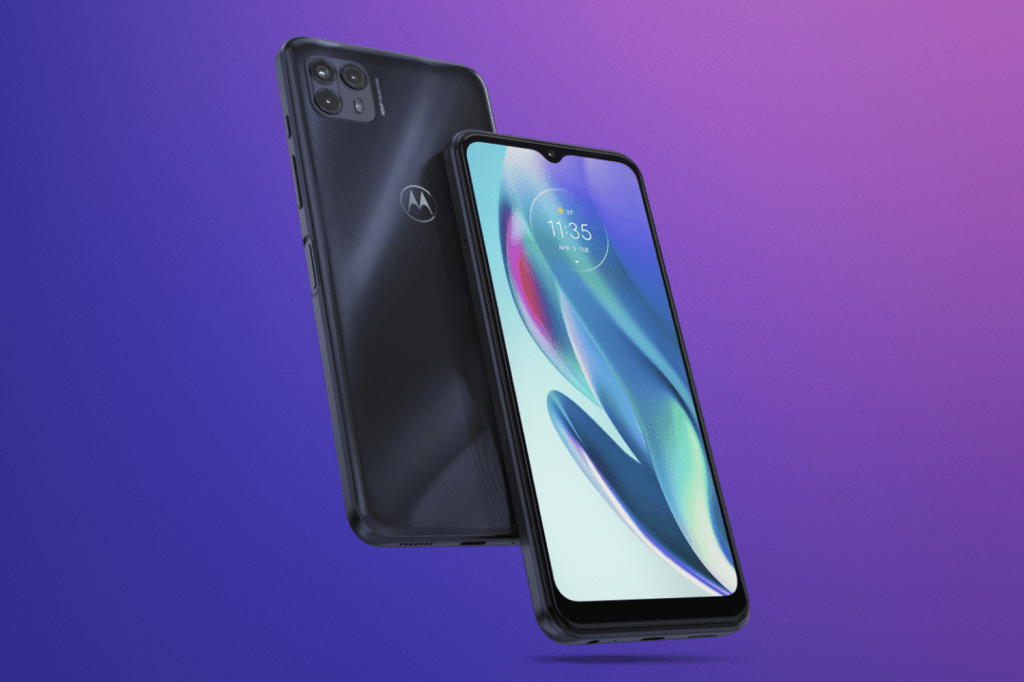
8. Motorola Moto G50
| Motorola Moto G50 specs | |
|---|---|
| Screen | 6.5in, 1600×720 IPS LCD w/ 90Hz refresh rate, 20:9 aspect ratio |
| Processor | Qualcomm Snapdragon 480 octa-core |
| Memory | 4GB RAM |
| Storage | 64GB on-board, microSD expansion |
| Cameras | 48MP, f/1.7 main w/ PDAF autofocus and LED flash, plus 5MP, f/2.4 macro, 2MP, f/2.4 depth sensor rear. 13MP, f/2.2 front |
| Operating system | Android 11 |
| Battery | 5000mAh non-removable |
| Dimensions | 165x75x9mm, 192g |
The G50 shares the same plastic construction, hardware layout and general heft as the even more affordable G30. The trade-off is excellent connectivity, with NFC, microSD card support and a 3.5mm headphone jack – plus the headline addition: 5G.
Similarities with the cheaper G30 continue up front, where you’ll find an identical 6.5in display with an underwhelming 1600×720 resolution and contrast that’s par for the course. But the G50 makes better use of the 90Hz refresh rates: while its chipset might seem less capable on paper, it’s more efficient and better able to keep up with taps and swipes.
You can still expect a short wait with more demanding apps, but the newer silicon delivers a slicker experience than the G30. It’s also largely up to the task for gaming. Frame rates can judder when loading Call of Duty Mobile, but things are perfectly playable once the action gets going. That extra efficiency also maximises the staying power of the 5000mAh battery, regularly going a couple of days without a charge – handy, given the tardy 15W charging speeds.
In most areas, the G50 bests the G30 – but it’s arguably less capable than even the entry-level G10 when it comes to cameras. You get a triple-lens setup, with a 48MP sensor topping the bill. It lacks the raw detail captured by the G30’s main camera and, unsurprisingly, it struggles in low light.

9. Motorola Moto G30
| Motorola Moto G30 specs | |
|---|---|
| Screen | 6.5in, 1600×720 IPS LCD w/ 90Hz refresh rate, 20:9 aspect ratio |
| Processor | Qualcomm Snapdragon 662 octa-core |
| Memory | 4GB RAM |
| Storage | 128GB on-board, microSD expansion |
| Cameras | 64MP, f/1.7 26mm + 8MP, f/2.2 ultrawide + 2MP, f/2.4 macro + 2MP, f/2.4 depth-sensor rear w/ phase-detect autofocus (main sensor only), LED flash. 13MP, f/2.2 front |
| Operating system | Android 11 |
| Battery | 5000mAh non-removable |
| Dimensions | 165x76x9.1mm, 200g |
Sandwiched between the cheaper G10 and the better-connected G50, the Moto G30 is a mid-range, middle-of-the-road mobile that offers plenty for those with a limited budget.
Despite its pared-back plastic build, the G30 is hefty at 200g and large enough to poke out of your pocket. That’s mainly down to the 6.5in display which fills the front of the phone. While its 20:9 aspect ratio is nicely cinematic, contrast is average and the 1600×720 resolution is disappointing. And though the option to run 90Hz refresh rates is a welcome one, the impression of smoother motion is limited by chipset performance. Even running uncluttered Android 11, switching apps isn’t stutter-free.
With a huge 64MP main sensor, the G30 does have one of the highest resolution cameras at this price point. It deploys nifty algorithms to deliver 16MP photos, using the extra data to strip out noise, boost details and grab more light. It works impressively well in daylight, but less convincingly after dark. Only one of its secondary snappers is worth your time: the 8MP ultra-wide is noisy but usable.
Where the G30 excels is battery life. Pairing a beefy 5000mAh cell with a power-efficient CPU translates into impressive longevity: 48 hours between charges isn’t hard to manage.

10. Nokia G50
| Nokia G50 specs | |
|---|---|
| Screen | 6.82in, 1560×720 LCD w/ teardrop notch |
| Processor | Qualcomm Snapdragon 480 octa-core |
| Memory | 4GB RAM |
| Storage | 64GB on-board, microSD expansion |
| Cameras | 48MP, f/1.8 w/ phase-detect AF, plus 5MP ultrawide, 2MP depth rear. 8MP front |
| Operating system | Android 11 |
| Battery | 5000mAh |
| Dimensions | 174x78x8.9mm, 220g |
Nokia’s G50 is no speed demon. And while its 48MP main sensor deals well with detail, its multiple cameras are never going to blow you away. Plus you can get more muscle for your money from the likes of Poco, Realme and Redmi. So why would you opt for the plastic-shell Nokia? First, it’s one of the cheapest ways to get a 5G handset, offering faster connectivity without a premium.
And second, because if you spend most of your time glued to YouTube, the G50’s giant screen is sure to entertain. At 6.82in, it’s larger than what you’ll find on many flagship phones costing five times the price. It’s not an OLED panel and refresh rates max out at 60Hz, but brightness is ample, colours natural and contrast decent.
The entry-level Snapdragon 480 processor was never going to feel especially snappy – and with only 4GB of RAM in support, apps regularly take a moment to open. But you can still play titles like Call of Duty Mobile with too much stuttering.
It helps that Nokia has committed to Android One: the G50 ships with an OS free from CPU-sapping bloatware. It also benefits from a beefy 5000mAh battery that can comfortably last a day and a half between charges. Handy, even if the sizeable cell means the G50 is a weighty thing at 220g.
How to buy the best cheap phone
Being at the lower end of the market means you’ll have to make some compromises, but as we mentioned in the introduction, affordable smartphones are much better than they used to be (so you won’t be getting an unusable slab).
One of the biggest differences you’ll notice between the best cheap phones and more premium models is the build quality. While you won’t be getting a device crafted from glossy glass and aluminium, we’ve made sure to select phones made from durable materials and with a solid construction.
The display is one of the most important aspects to focus on, as its the thing you’ll be looking at and interacting with the most. Cheaper phones used to have lower-resolution displays, lower brightness levels, or limited color accuracy, but the phones included in our list have OLED panels, high refresh rates and bezel-less displays – it’s very refreshing to see.
If you take lots of pictures with your phone, then the camera is a key feature to look at. Cheap phones often compromise on the camera – you won’t be getting an quadruple camera systems or superzoom lenses here, but you can get a decent main and selfie camera.
You’ll want a smartphone from a manufacturer that provides regular software updates, which can important for security and functionality, as well as a software experience that is relatively unmodified for a better user experience.
We’ve recommended phones with decent enough processor performance and RAM to handle your day-to-day tasks (and even some capable of gaming).
Now read about the best upcoming smartphones.

